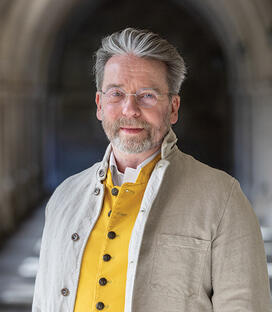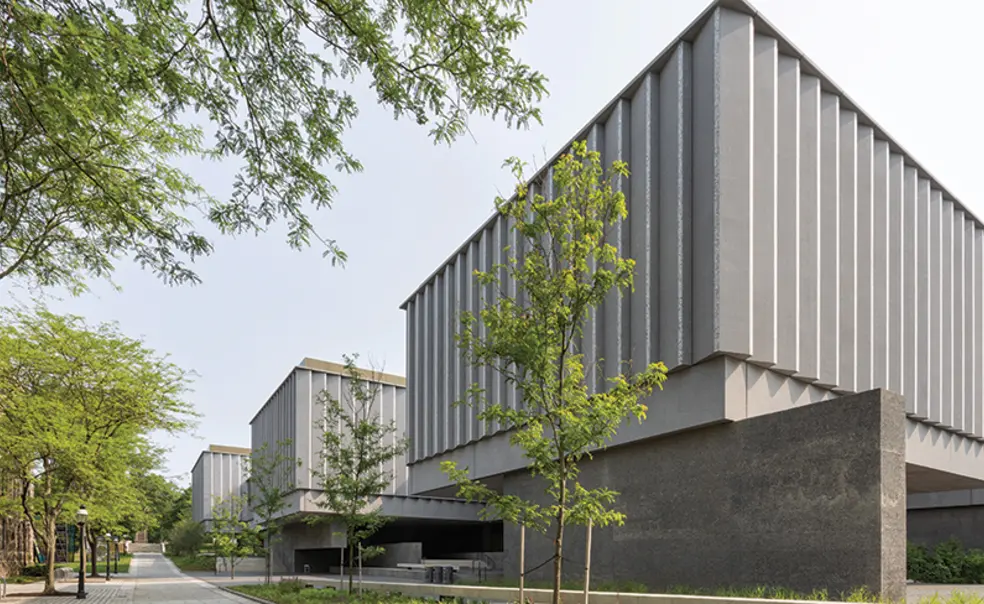The ‘Encyclopedic’ Museum, Reimagined at Princeton
As we look forward to next month’s reopening of the Princeton University Art Museum, I asked museum director James Steward to share his insights on the magnificent new building and the museum’s role as a center for Princeton scholarship and community life. I look forward to seeing you there. — C.L.E.

The art world’s affection for the “encyclopedic museum” — one encompassing much or even the whole of the world in its scope — has fluctuated over time, with some arguing that the pursuit of universality was both false and doomed to fail. Suddenly, the encyclopedic museum is finding renewed favor in the profession, made useful and necessary once again in the face of social fissures and factions.
The dazzling new Princeton University Art Museum, opening next month thanks to the generosity of so many alumni past and present, will serve as a timely reimagining of the museum as both “encyclopedic” in scope and attentive to the concerns that ambitions of comprehensiveness have in the past aroused.
Princeton’s museum, ten years in the making, builds on one of the most durable collecting histories in North America. Our roots go back to the acquisition of the first work of art by the College of New Jersey in 1755 — a year before the college itself settled in Princeton.
From early on, our museum looked beyond Europe in defining its reach. We were among the first museums to consider Asian art as a focus for serious collecting, in the 1860s. By the 1930s, African art became a dedicated pursuit. And by 1969 photography was emerging as a serious focus, even as Princeton became the continent’s first university to create a professorship in the history of photography.
The result is what I sometimes term the most expansive set of art collections under a single roof on any college campus in this country. Other university museums have many strengths, but ours is the one that most seriously seeks to contend with the whole of the world’s cultural heritage.
Collections that were once shaped for different intellectual purposes have been reconsidered at Princeton as they have entered our care, affording encounters of remarkable quality and range. Our campus community and visitors have the opportunity to explore cultural contact and exchange in ways usually possible only in our greatest national museums.
With the new building, architecture is at last enabling this set of virtues rather than throwing up obstacles. Designed from the inside out, the new building places 95 percent of its galleries on a single level, where works of art from disparate places and moments can talk with each other. The building it replaces had no fewer than twenty-one floor levels, thanks to different moments of building and expansion, disrupting the movement of both art objects and visitors.
We have nearly tripled the number of objects on public view while shaping a more varied visitor experience. Gone are the hierarchies of display that led to Asian art and the art of the ancient Americas, two of our richest collections, being relegated to a basement level to which many past visitors never made their way.
Assigning the museum a central piece of University real estate, then as now, is a powerful affirmation of the value we place at Princeton on a humanistic education. It remains a short walk from all of the University’s humanities programs and its residence halls, and from the heart of our town, conferring both symbolic resonance and practical benefit as a center for campus and community life.
Free admission — a hallmark of our museum from its inception — ensures that anyone can seek out a moment of communion with a favorite object on a visit of five minutes or five hours. More expansive hours ensure that people can come to us for challenge or comfort even late into the evening.
As the construction fences have come down and landscaping and numerous works of public art have arrived, the nine pavilions of our new facility — including the one housing Marquand Library, retained from the past but now transformed — begin to nestle into their setting. Dynamic setbacks from McCosh Walk and Prospect Garden, as well as newly shaped outdoor terraces for both art and people, surprise in their generosity.
Occupying the site identified in 1911 by then-University architect Ralph Adams Cram as the ideal location for a new and larger museum, today’s museum frames vital vistas just as it creates views onto the campus that have never before existed. I hope the result is as engagingly transformational for Princeton, its students, faculty, staff, alumni, neighbors, and visitors as it already is for the museum itself.












4 Responses
Richard Perea *72
3 Months AgoAppreciating Art and the Chance to Compare
While I understand the problems some might have with the new art museum’s architecture, I like the fact that the Princeton University Art Museum is taking an encyclopedic approach in the first place. I am a docent with the Museum of Fine Arts in St. Petersburg, Florida — perhaps the only truly encyclopedic art museum in the state. While there are at least two other terrific art museums in our city, both worth visiting, I can attest to the value of one that is truly encyclopedic. Any undergraduate would appreciate the ability to “compare and contrast” offered by an art museum with a global range in its collection. Perhaps a bit more of the “beaux arts” or the Gothic would have been appreciated by some with respect to the building, it’s what’s inside that counts, no?
Rocky Semmes ’79
3 Months AgoBuilding’s Design Fails to ‘Dazzle’
No amount of wishful thinking can turn a sow’s ear into a silk purse, and that apt adage might appropriately apply here to the new Princeton University Art Museum. The President’s Page (September issue) describes the museum as “dazzling,” yet the word does not readily come to mind at first sight of those somber gray behemoth brutalist boxes.
Admittedly the interior spatial layout, the circulation and procession through the galleries, and the overall program of the building may indeed be stunning and prove brilliantly inviting. But the Normandy Beach Atlantic wall appearance of the building cluster strikes one initially as an abysmal architectural abomination, and a derelict desecration of the once decidedly delightful shaded sylvan campus surroundings.
The role of a designer, of any stripe, is creating beauty and contributing it to the greater world at large. If that isn’t possible architecturally, perhaps the best solution is burying any such subsequent similar campus structures. A building below-grade at least presents the promising potential of a garden over its sight-unseen subterranean situation, and who doesn’t like the suggested paradise of a garden?
Stephen T. Schreiber
3 Months AgoLocal Anticipation for the New Art Museum
As a member of the greater community outside the University, I can tell you that the excitement about the opening of the new museum is palpable! Having seen presentations about the progress of building and now of the galleries themselves, having a world class museum within walking distance for most of us sets a standard for our community that reinforces why so many of us live in town. We, like the University, have been waiting a long time for the opening. There is no question that this addition to the University will elevate community relationships to an even stronger position and give us one more reason to visit the campus.
Stephen William Foster *77
3 Months AgoGreat News, but an Off-Putting Exterior
The photo that appears on page 2 of the September issue of PAW (President’s Page) brings great news of the new Art Museum. But the exterior design is vastly disappointing to say the least. Princeton seems to substitute an architectural vision for campus buildings borrowed from that of an industrial park for its magnificent architectural heritage. The exterior is shocking and off-putting and surely offers no promise of “art,” whatever the interior may hold. It is truly terrible, particularly given the University’s School of Architecture located nearby. I am quite dismayed.
This structure and other recent additions of new campus buildings not only make me disinclined to visit my alma mater but to make contributions to the University as well.